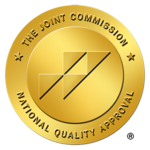Home / What We Treat /
Home / What We Treat / Fentanyl Addiction Treatment in St. Louis
Fentanyl addiction is a serious problem in the U.S. and around the world. The synthetic opioid is used to treat severe pain, but it’s also abused as a recreational drug or added to other recreational drugs, sometimes without the person knowing.
What Is Fentanyl?
Fentanyl is one of the most potent synthetic opioids on the market. Its potency is estimated to be between 50 and 100 times that of morphine, which is the benchmark to measure the potency of other opiates. Fentanyl may be prescribed to treat severe pain that isn’t relieved by other treatments, such as cancer-related pain or post-surgical pain, using patches, lozenges, or injectable solutions.
However, illicitly manufactured fentanyl is also in circulation. It’s produced in laboratories without quality control or consistency in dosage. Dealers may mix fentanyl into other street drugs, such as heroin, cocaine, methamphetamine, or counterfeit prescription pills – often without the person knowing. This significantly increases the risk of overdose, since the person using the drug is unaware of the potency and can accidentally overdose.
Fentanyl is used recreationally for its analgesic effects, including pain relief, euphoria, and relaxation, but it can have other effects like confusion, drowsiness, dizziness, nausea, vomiting, constricted pupils, and respiratory depression.[2] Fentanyl has powerful effects on the brain, causing a flood of dopamine that reinforces the behavior. Tolerance and dependence build quickly, bringing intense withdrawal that makes it difficult to quit.
Fentanyl Addiction and Abuse
Fentanyl addiction can occur quickly because of the drug’s potency and effects on the brain. Like other opiates and opioids, fentanyl binds to the opioid receptors and floods the brain with dopamine, causing an intense euphoria. Tolerance can happen quickly, leading to higher and higher doses to get the same effects. It’s not long before dependence occurs, which means the body needs fentanyl to function and goes through intense withdrawal if the drug is reduced or stopped.
Fentanyl addiction can happen because of intentional use, but it also occurs through unintentional exposure to the drug from contaminated street drugs. In some cases, fentanyl addiction occurs with prolonged use of a legitimate prescription for pain that leads to dependence or misuse, even if the drug is taken as directed.
The signs of fentanyl abuse may include physical dependence and increasingly heavy, frequent, or unhealthy use, despite the problems it causes to health, safety, financial security, or personal relationships.[3] Cravings, drowsiness, changes in sleep habits, weight loss, poor hygiene, isolation, stealing, lying, and new financial difficulties are also common signs of fentanyl addiction.

Fentanyl Addiction and Overdose Statistics
Fentanyl is a public health crisis. More than 107,000 people in the United States died due to drug overdose in 2023, and 70% of those deaths were attributed to opioids like fentanyl.[4] Worldwide, 600,000 deaths were attributed to drug use in 2019, 80% of which were related to opioids.[5]
Many of the people using fentanyl may not even realize it. DEA laboratory testing of confiscated drugs in 2023 indicated that 5 out of 10 pills tested contained a potentially deadly dose of the drug.[6] A mere two milligrams of fentanyl can be a lethal dose.
Fentanyl Overdose
Fentanyl overdose is a serious and likely risk with fentanyl use or the use of potentially contaminated street drugs. Fentanyl is a powerful depressant that slows vital functions to dangerous levels, possibly stopping breathing and leading to brain damage or death.
Some of the signs of an opioid overdose may include:[7]
An opioid overdose is a medical emergency. If you suspect someone is overdosing, call 911 immediately. Naloxone, an opioid antagonist medication, can be used to reverse an opioid overdose, restoring breathing and brain function. Rapid administration of naloxone can possibly save a life during an opioid overdose. With fentanyl, it’s best to administer multiple naloxone doses to reverse the effects of the drug.

Fentanyl Addiction Treatment in St. Louis
Fentanyl addiction can be challenging because of intense withdrawal. At Engage Wellness, we take a comprehensive approach to fentanyl addiction treatment to not only address the physical aspects of substance use disorder but also the underlying emotional, social, and psychological factors. Our detox placement is usually the first step to coordinate medically supervised detox and help with the intense withdrawal before comprehensive addiction treatment.
After detox is complete, it’s crucial to continue with addiction treatment programs. We offer intensive outpatient programs (IOP) for fentanyl addiction, which involve rigorous therapy sessions multiple times a week without an inpatient or residential stay, or outpatient treatment for more scheduling flexibility to balance day-to-day responsibilities. All programs could include Medication-assisted treatment (MAT). MAT uses FDA-approved medications like buprenorphine, naltrexone, or methadone to reduce cravings as part of a comprehensive treatment plan.
These programs use a variety of therapies according to your individualized care plan, including:
01
Family therapy brings loved ones together to resolve conflicts, address past problems, and create a supportive environment for recovery.
02
Group therapy brings peers together to share experiences, provide emotional support, and develop social skills.
03
12-Step groups are based on the principles of Alcoholics Anonymous (AA) and work to improve recovery through accountability, reflection, and a sense of community.
04
CBT focuses on identifying and changing unhelpful thought and behavioral patterns that contribute to substance use.
05
DBT combines behavioral therapy principles with emotional regulation skills and mindfulness development.
06
MI is a technique that encourages internal motivation by resolving ambivalence toward opioid addiction treatment and recovery.
07
EMDR is a leading treatment for trauma that can be helpful if traumatic experiences are factors in drug addiction.
08
Relapse prevention programs combine techniques to identify triggers, manage daily stress, and maintain sobriety long term.
09
Holistic treatment focuses on the whole person with therapies like acupuncture, yoga, or meditation to promote well-being.
10
Our veterans program is tailored to the unique challenges that military veterans face with substance abuse, including trauma and post-traumatic stress disorder (PTSD).



